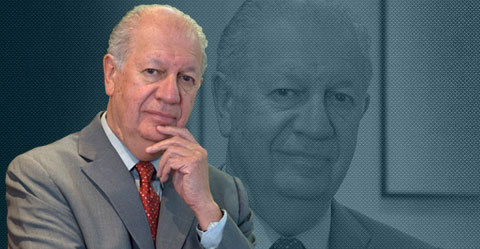 Looking back after a long period spent in public life, I can see that what we did in the past, in fact precisely because of what we did in the past, has transformed us into a very different country. If we were to compare a photograph of Chile taken in 1990 with one taken today, we would see very different situations that demonstrate a profound political, social and economic mutation of Chilean society.
Looking back after a long period spent in public life, I can see that what we did in the past, in fact precisely because of what we did in the past, has transformed us into a very different country. If we were to compare a photograph of Chile taken in 1990 with one taken today, we would see very different situations that demonstrate a profound political, social and economic mutation of Chilean society.
In political terms, in 1990 a subservient State meekly implemented neoliberal policies and allowed the markets to regulate themselves. Today, that weak state has been under increasing scrutiny since the crisis of 2008. The solution of every single Western leader to the economic crash was political. I.e.: to strengthen an active State that regulates the market and its effects.
In economic terms? We are still the largest producers of copper in the world but while in 1990 we accounted for 16% of total production, today that figure is 30%. While twenty years ago GDP per capita was 5000 dollars per inhabitant, in 2015 we are close to 20,000, although examination of how that wealth is distributed is another question entirely. In 1990 the reigning theoretical paradigm held that to achieve substantial growth the income per inhabitant needed to increase. Today, in contrast, now that we have almost reached the 22 thousand dollars mark, development is determined by how income is distributed. This is joined by a new paradigm that didn’t even exist in the nineties. The issue of greenhouse gas emissions per inhabitant will very soon be seen as determining the degree to which a society is civilized.
In the social sphere, we have progressed from a child mortality rate of 12 per thousand people to 8 per thousand, from child malnutrition to obesity and from 40% of the population living below the poverty line to 10%.
The photo from 1990 would have been analogue, today it is digital. The emergence of new technologies has had a profound impact on communications and relationships and the present is now documented to an incredible degree. Today the citizenry knows more and demands much more.
These two very different realities show the path that has taken us to contemporary Chile. The 30% of the population that rose above the poverty line have got back on their feet and are experiencing a new stage in their personal and familial development. They are now part of an emerging middle class that has new perspectives and new demands. The State, meanwhile, must provide for these needs in an efficient and transparent way, meeting the challenges that face it: protecting citizens from market forces that do not regulate themselves sufficiently if at all, providing space for reflection on a new contract between Chilean men and women, adding value to our mining output by developing goods and investing in scientific research, achieving growth with the least amount of emissions possible, providing a more equitable distribution of income and ensuring minimum guarantees for all citizens in education, healthcare, housing and quality of life. Only then will we, in 25 years’ time, be proud that we made the Chile we dream of today into a reality.
Leave a comment



